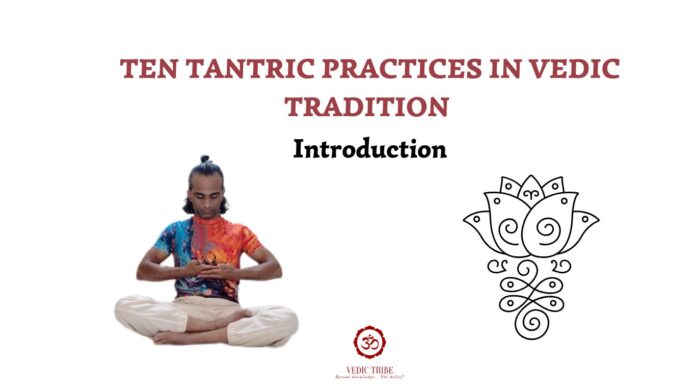Understanding “Tantra”: Beyond Magic and Into Practice
When you hear the word “tantra” in movies or books, it’s often linked to mysterious rituals or even dark magic. But that’s a very narrow and often incorrect view.
In the context of Vedic spirituality, “tantra” has a much more practical meaning: it refers to external practices used to deepen one’s spiritual connection.
Two faces of one coin:
Vedic spirituality integrates both external actions and internal mental states for a wholistic approach.
Internal Practice: This is what happens inside your mind. For example, silently meditating or repeating a sacred name (like chanting a mantra in your mind) is an internal practice.
External Practice: This involves physical actions or tools that support your internal practice. For example, using prayer beads (mala) to keep track of your mantras, or performing a ritual with specific gestures and offerings.
These external practices developed into a tradition itself – today known as “Tantra Tradition”.
So, tantra is about using physical tools and actions to enhance your spiritual journey.
The Debate: Is Tantra Part of the Vedas?
There’s a bit of a debate among scholars about whether tantra is truly part of the Vedic tradition.
– Some scholars argue that tantra is separate from the Vedas, citing a statement by a scholar named Kulluka Bhatta. He wrote a commentary on the Manusmriti where he mentioned “two types of revelations: Vedic and Tantric.” This suggests they are distinct.
– However, this is pretty much the only strong piece of literary evidence that supports that view. There isn’t a widespread agreement upon that thought.
– The vast majority of Vedic schools and traditions consider tantra to be a part of Vedic spirituality, not something separate. They see the Vedas as the foundation, and tantra as a set of practices that help you apply the Vedic teachings in your daily life.
Ten Key Tantric Practices:
There are many different tantric techniques, but here are ten important ones:
- Mandala: These are intricate geometric designs that represent the universe. They are used for meditation and visualization.
- Mantra: These are sacred sounds or syllables that are repeated to focus the mind and invoke spiritual energy.
- Mudra: These are symbolic hand gestures that are used to direct energy and create specific mental states.
- Nyasa: This involves touching different parts of the body while reciting mantras, to infuse them with divine energy.
- Prayashcitta: These are rituals of purification and atonement, used to remove negative karma.
- Puja: This is a ritual of worship, involving offerings and prayers to deities.
- Vrata: These are vows or observances, such as fasting or specific dietary restrictions, undertaken for spiritual growth.
- Yantra: These are geometric diagrams that represent specific deities or cosmic energies, used for meditation and worship.
- Yatra: This refers to pilgrimages to sacred sites, which are believed to be charged with spiritual energy.
- Yoga: While yoga is a broad term, in this context, it refers to the physical and mental practices that aim to unite the individual with the divine.
In Simple Terms:
Imagine you want to learn music. You could learn the theory (internal practice) by studying music books. But you could also use a musical instrument (external practice/tantra) to actually play music. Tantra, in Vedic spirituality, is like the musical instrument – it helps you put the spiritual teachings into practice.
Vedic Tribe is happy to bring you this introductory series on the said ten tantric practices which are part of vedic spirituality.
In the next article we will discuss “Mandala”
Our intention is to create enough curiosity in you so that you study the Vedic spirituality and adopt them in your day to day life
All the best
Madhwesh K
Vedic Tribe

